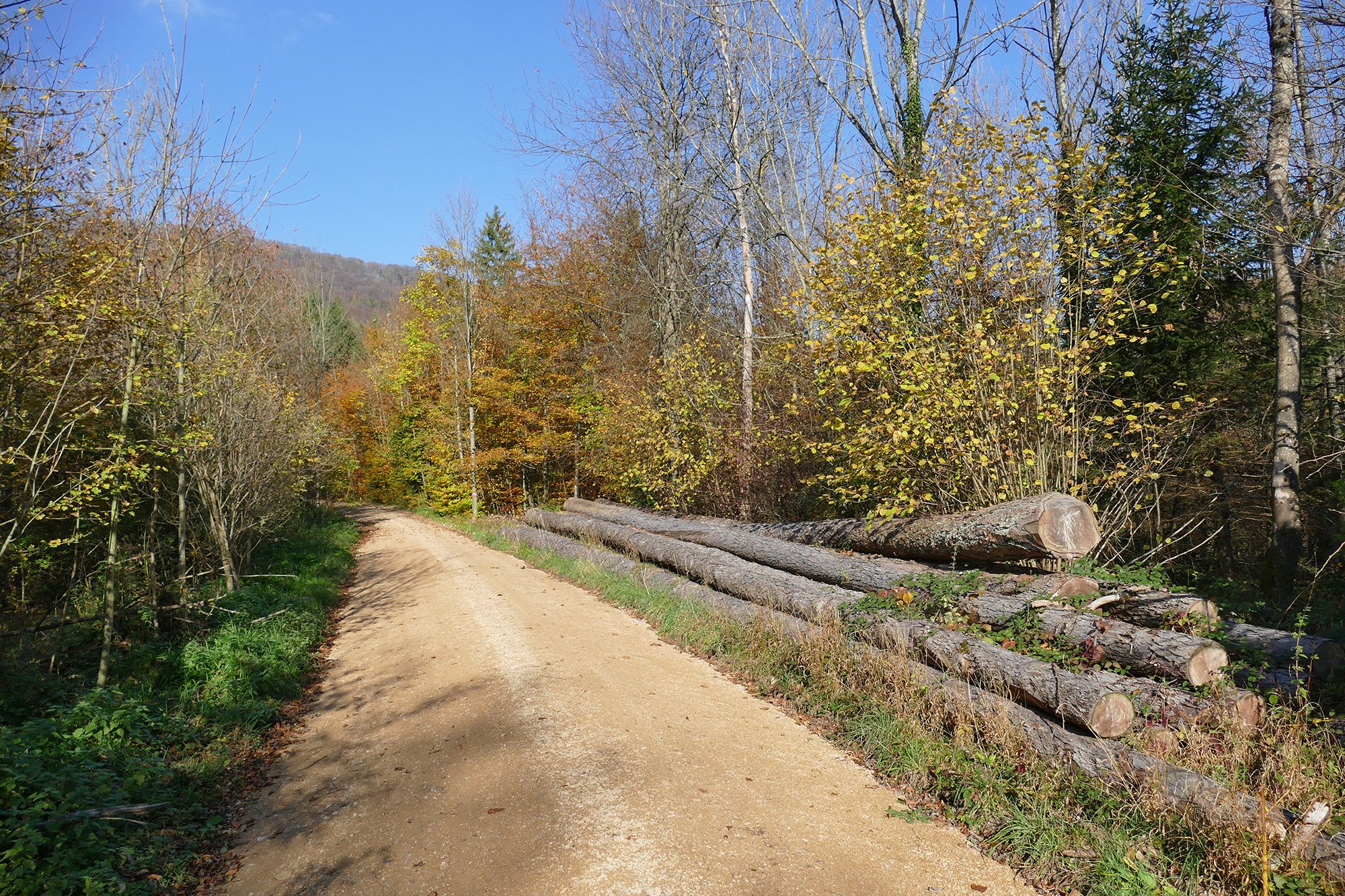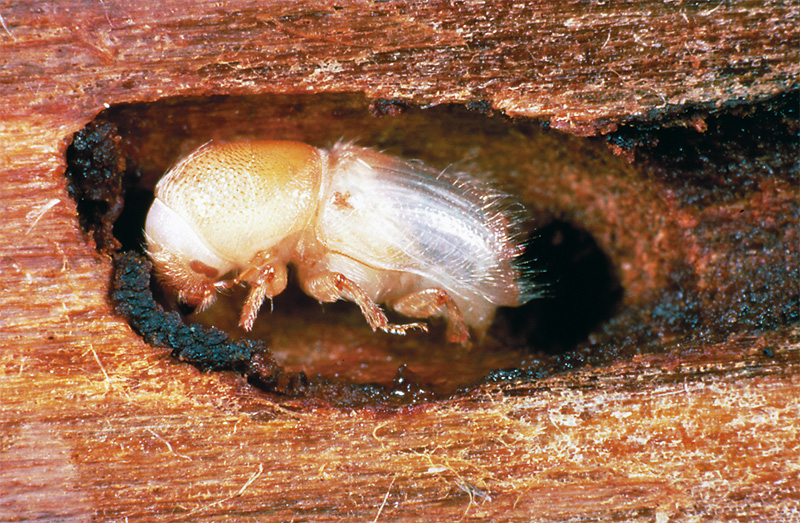The goal of the research is to identify the locations that are preferred by I. typographus and thus would be particularly at risk for infestation. To achieve this, the specific characteristics of landing sites are analyzed to determine the preferred stand and terrain structures that are preferred during dispersion.
Real-world laboratories "bark beetles"
The Knowledge Dialogue Northern Black Forest is one of seven real-world laboratories of the state of Baden-Württemberg. These projects were funded from January 2015 until December 2017 by the Ministry of Science, Research and the Arts in the state of Baden-Württemberg. Real-world laboratories are a new form of research with a focus on the collaboration between science and civil society. The aim of this approach is to achieve a better integration of scientific findings into politics, economy and society. The research topics of the Knowledge Dialogue Northern Black Forest were developed with the local population in a kick-off event. The main subject of the real-world laboratories is the sustainable development of the region. The topic "bark beetles" was requested by the local population due to its topicality in the context of the founding of the national park.
Targeting: the habitat preferences of European spruce bark beetle
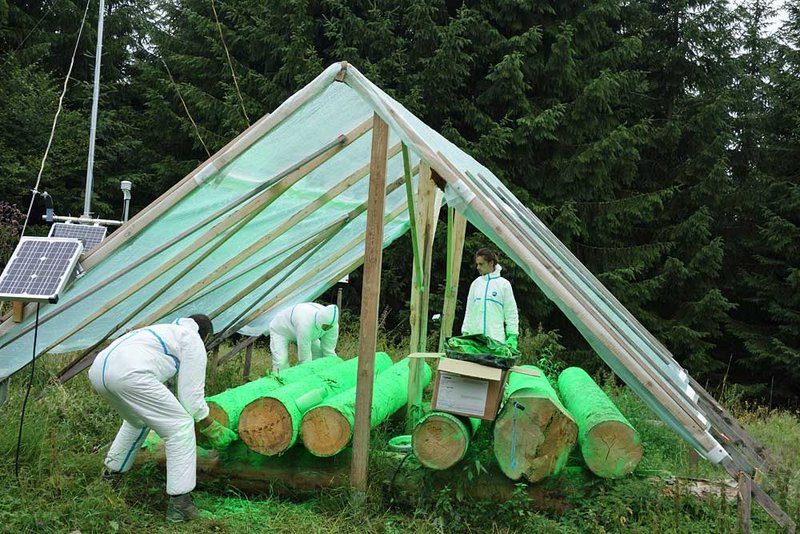
Fig. 1: Coloring breeding logs in the Black Forest National Park (photo J. Hinze).
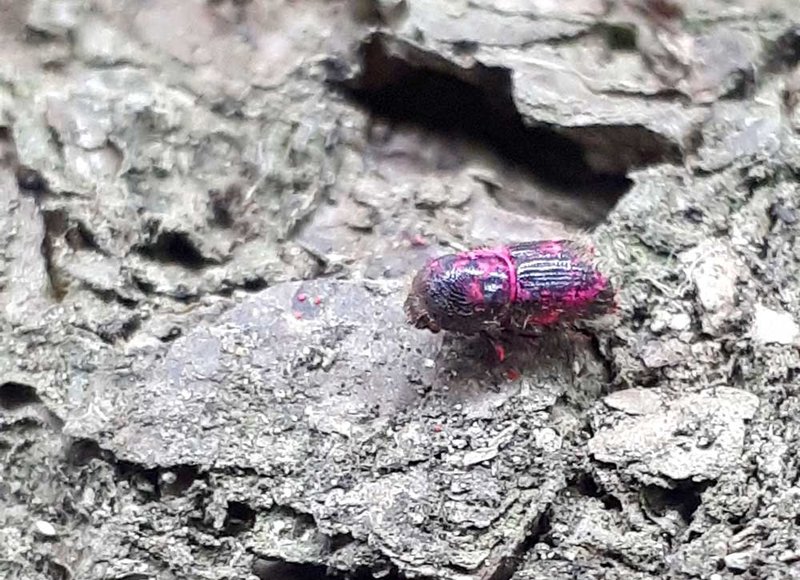
Fig. 2: Marked European spruce bark beetle on the bark of a breeding tree (photo J. Hinze).
The European spruce bark beetle (Ips typographus L.) is one of the major forest pests of central Europe’s commercial forests. Because of its high forest economic relevance much research has focused on I. typographus. The main focuses of research are the dispersion and the host detection of the European spruce bark beetle. A risk assessment of forest stands is possible knowing factors that influence the spread of this bark beetle. This allows for a temporally and spatially precise and effective management of this pest; a so called "Precise Pest Management" that saves resources and protects habitats from avoidable interventions and disturbances.
The goal of the research is to identify the locations that are preferred by I. typographus and thus would be particularly at risk for infestation. To achieve this, the specific characteristics of landing sites of the European spruce bark beetle are analyzed to determine the preferred stand and terrain structures that are preferred during dispersion.
The Method
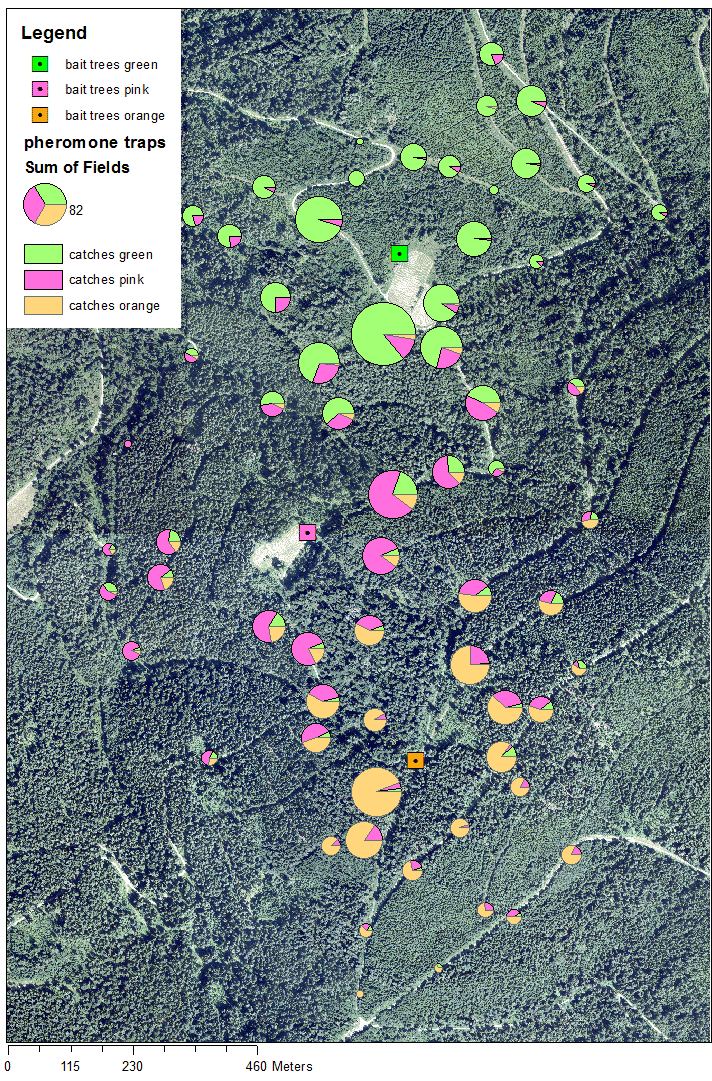
Fig. 3: Total catches of the individual pheromone traps in 2016.
Beginning in 2015 and continuing until 2017 breeding trees for I. typographus in form of spruce trunks were laid out in a study area in the Black Forest National Park. Colonization was stimulated by using an attractant. The bark surface was covered with a fluorescent color before the beetles emerged from the bark (fig. 1). While boring out the beetles marked themselves passively with pigments of the color (fig. 2).
Thereupon it was possible to identify the marked beetles in approximately 60 pheromone traps, which were widely distributed within the study area to catch the bark beetles. Data from every corresponding pheromone trap was collected to identify spatial and structural preferences of I. typographus. Using data from the daily trap catches it was possible to draw conclusions about the spreading dynamics, the flight distances and the special preferences of the dispersing bark beetles. Subsequent analysis showed the age (young or old) and the sex of every single beetle caught and this allowed us to discover differences in spreading behavior.
Results
In 2015 more than 6,000 marked individuals of I. typographus were caught in the pheromone traps. Data obtained from these beetles showed that neither age nor sex have a significant influence on the spreading behavior of the bark beetle. Subsequently the experimental design was optimized in 2016 to focus on the structural preferences of I. typographus during dispersal. The number of catches of marked beetles in the different traps varied widely during the trial period in 2016 (fig. 3). Statistical analyses of the influence of more than 30 spatial parameters on recapture ratio revealed five parameters that are suitable for a good prediction of favored locations of the European spruce bark beetle:
- the proximity to an infestation of I. typographus has a positive effect on the catches of the bark beetles,
- the “Topographic Wetness Index” (TWI) is a steady state wetness index calculated from a digital terrain model. Using the TWI showed that I. typographus preferred dry locations,
- a small number of broadleaved trees in the surrounding of a bark beetle trap lowered the number of catches significantly,
- a high timber volume of Norway spruce in the vicinity of a trap had an attracting effect on the beetles and
- a high crown proportion measured at a height of 20 m was attractive as well.
In 2017 the experiment was repeated to validate the preliminary results of 2016. However, only a few marked beetles were caught because of the high attracting effect of an infested forest stand near the traps and unfavorable weather conditions. Despite this situation catches of the wild population of I. typographus enabled us to validate the computed models of 2016 and we were able to identify the structural preferences of the bark beetles.
Benefit for the northern Black Forest region
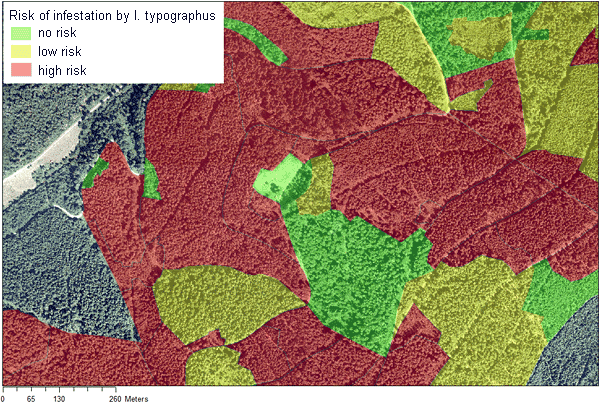
Fig. 4: Example of a risk map to visualize the various exposures of stand structures to bark beetle infestation.
The protection of forests bordering the Black Forest National Park has highest priority in the northern Black Forest. Using knowledge of the accurate habitat preferences and dispersion dynamics of the European spruce bark beetle it is possible to create risk maps for forest stands, which can lead to sophisticated recommendations for targeted and efficient infestation controls (fig. 4). These risk maps can specify pest management strategies for I. typographus in the commercial forests as well as in the buffer zone of the Black Forest National Park. This allows us to protect forests adjacent to the national park and helps preserve the typical landscape of the Northern Black Forest throughout the area.
